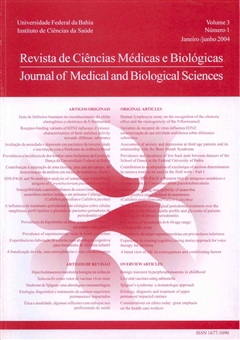Human lymphocyte assay on the recognition of the citotoxic effect and the clastogenicity of the 5-fluorouracil
DOI:
https://doi.org/10.9771/cmbio.v3i1.4302Keywords:
5-Fluorouracil, Chromosomal aberrations, Breast cancer.Abstract
5-fluorouracil is being use in chemotherapic protocols as part of the therapeutic of some kinds of cancer, like breast cancer. Among other effects, this substance inhibits the timidalato sintetasis, undermining DNA synthesis, and incorporates itself in the RNA, thus interfering in the protein synthesis processing. In normal cells, 5-fluorouracil can induce mutations and present genotoxical effects, leading to the appearance of secondary damages to the human metabolism. This investigation aimed to evaluate the clastogenic and cytotoxic effect of 5-fluoroacyl in different concentrations, to verify which would cause the lesser damage to the organism. As a test-system we took a culture of 72-hours peripheric blood lymphocytes, in six patients with breast cancer and four normal controls with the same sex, age and life habits. 5-fluorouracil was applied in G2, four hours before beginning of culture in concentrations of 1,0; 2,5; 5,0; 7,5; 10 µg/ml. The obtained slides were stained with Giemsa and analyzed under microscope. Cytotoxic and clastogenic actions of 5-fluorouracil were studied through calculation of the Mitotic Index and Chromosome Aberration analysis, with analysis of 50 cell for each treatment, according to conventional protocol. The obtained results show chromosomal damage in all concentrations, with more significant difference in 2,5 µg/ml concentration, which suggests that in a certain concentration, 5-fluorouracil saturates membrane receptors, making the cell stop responding to increase in concentration.Downloads
Download data is not yet available.
Downloads
How to Cite
Moreira, L. M. de A., Araújo, L. M. P., Cordeiro, A. P. B., & Gusmão, F. A. F. (2004). Human lymphocyte assay on the recognition of the citotoxic effect and the clastogenicity of the 5-fluorouracil. Journal of Medical and Biological Sciences, 3(1), 5–12. https://doi.org/10.9771/cmbio.v3i1.4302
Issue
Section
ORIGINAL ARTICLES
License
The Journal of Medical and Biological Sciences reserves all copyrights of published works, including translations, allowing, however, their subsequent reproduction as transcription, with proper citation of source, through the Creative Commons license. The periodical has free and free access.


